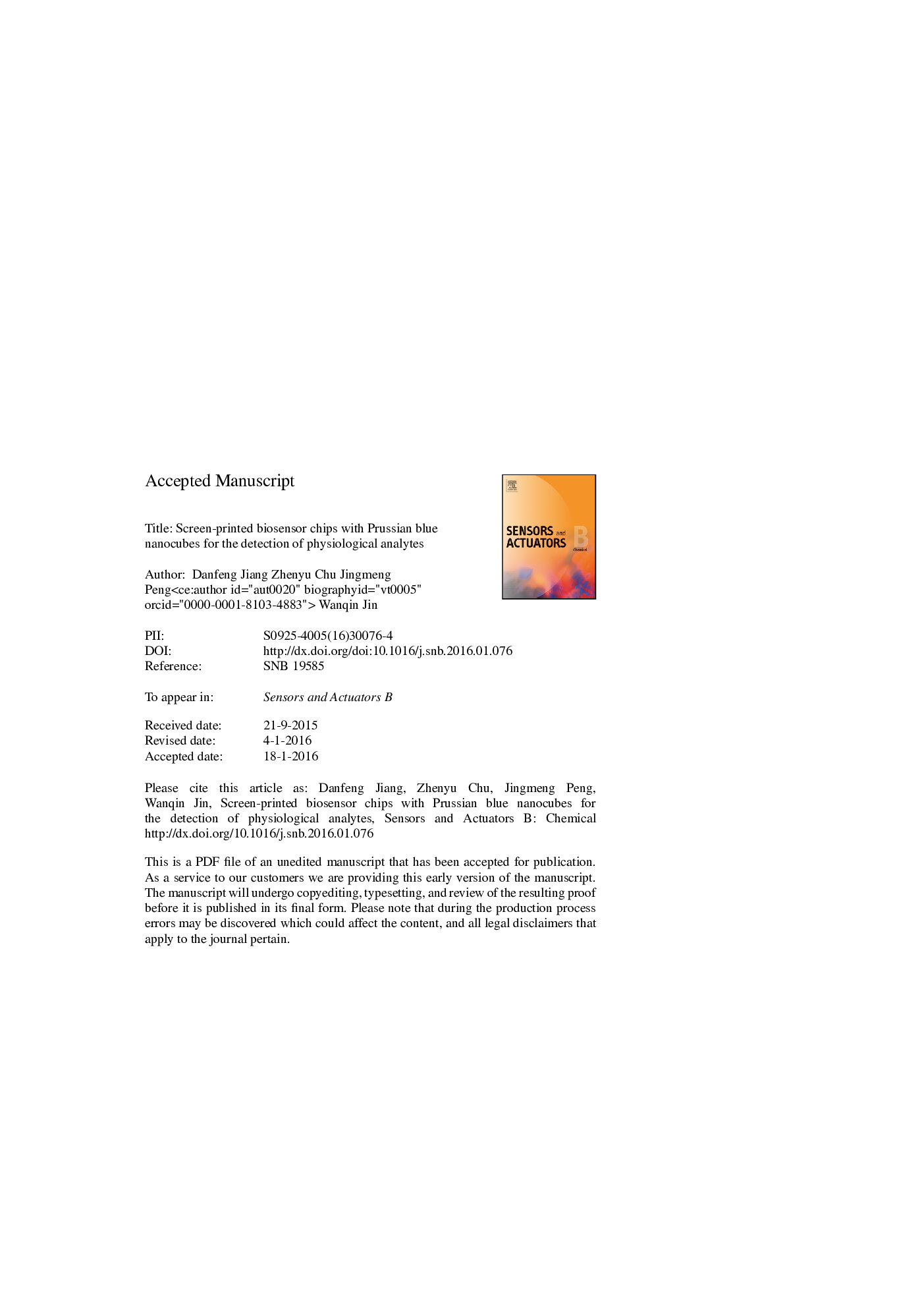| Article ID | Journal | Published Year | Pages | File Type |
|---|---|---|---|---|
| 7144637 | Sensors and Actuators B: Chemical | 2016 | 32 Pages |
Abstract
A Prussian blue (PB) biosensor chip with the nanocubic crystals was fabricated in batch by a screen printing technique for the general detection of various physiological substances. Through a low-speed chemical synthesis approach, the nanostructure of PB slurry was well controlled to be a 100 nm nanocube by the synthesis temperature and reactant concentration. Then, PB slurry was screen-printed as the working electrode to construct a microchip by the integration of the printed reference and counter electrodes. Due to the high electrocatalytic activity attributed by the regular nanostructure of PB electrode, the as-prepared chips exhibited the generally high sensitivities of 83.404, 31.642 and 6.379 μA mMâ1 cmâ2 for the respective detections of glucose, glutamate and lactate, as well as the excellent selectivity, reproducibility and stability under the low work potential of â0.05 V.
Keywords
Related Topics
Physical Sciences and Engineering
Chemistry
Analytical Chemistry
Authors
Danfeng Jiang, Zhenyu Chu, Jingmeng Peng, Wanqin Jin,
